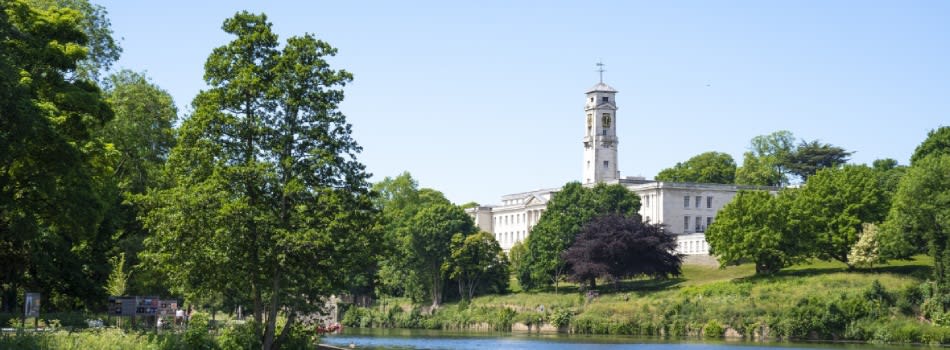About the Project
Dr Luisa Ciano (https://www.nottingham.ac.uk/chemistry/people/luisa.ciano)
Application deadline: 09/01/2021
Starting date: Apr 2021 or not later than Oct 2021
Project description
Finding alternatives to fossil fuels is an imperative of modern society. In this context, biomass waste offers a sustainable and renewable source of energy, but polysaccharides are very resistant to degradation. Many organisms have evolved a variety of proteins, such as glycoside hydrolases (GHs), carbohydrate binding modules (CBMs) and lytic polysaccharide monooxygenases (LPMOs),1 which synergistically act on the crystalline substrate to break it down to smaller components. Deepening our understanding of the molecular mechanisms behind enzymatic degradation of polysaccharides will lead to considerable improvements in the field, but the insoluble nature of these substrates hinders detailed investigations of protein-substrate interactions.
The aim of this PhD project is to address such a challenge and develop a method to analyse the direct interaction of GHs and CBMs to extended cellulose surfaces. Building up from previous studies, the successful candidate will design and synthesise suitable spin probes, test their insertion on the protein scaffold and analyse the protein-substrate interaction primarily via Electron Paramagnetic Resonance (EPR) spectroscopy. Enzymatic activity and protein-protein interactions will also be subjected to analyses (e.g. biochemical assays, mass-spectrometry, EPR) with the goal of gaining insights into enzymatic polysaccharide degradation. In parallel to these studies, the synthetic method developed for the spin probes will be adapted to introduce different modifications to the proteins (fluorescent tags, artificial catalysts).2,3
Based in the School of Chemistry, University of Nottingham, this project will provide extensive training in organic and bioinorganic chemistry, analytical techniques (NMR, MS) and spectroscopy (UV-vis, EPR).
Candidates will have a Chemistry, Biochemistry or Natural Sciences degree with a strong interest in bioinorganic/biological chemistry. The starting date for the project can be flexible: ideally Apr 2021 or, at the latest, Oct 2021. Prospective applicants are encouraged to contact Dr Luisa Ciano ([Email Address Removed]) for more details or enquires about the project.
Formal applications should be made online through the University of Nottingham’s online application system: http://www.nottingham.ac.uk/pgstudy/how-to-apply/apply-online.aspx
Funding notes
Fully funded studentship to commence before Oct 2021 (preferred starting date Apr 2021). UK students – tuition fees paid and full stipend, tax-free, for 42 months at the RCUK rate (currently £15,285 per annum). EU students eligible and considered as UK students if available to start by Aug 2021, please get in touch for further details.
Entry requirements
Applicants should have, or expected to achieve, at least a 2:1 Honours degree (or equivalent if from other EU countries) in Chemistry or a related subject. A MChem/MSc-4-year integrated Master’s, a BSc + MSc or a BSc with substantial research experience will be highly advantageous. Experience in one or more of the following will also be beneficial (but not essential): biochemistry, biological chemistry, bioinorganic chemistry, spectroscopy.
If English is not the candidate’s first language, they must provide evidence before the beginning of the studentship that they meet the University minimum English Language requirements (IELTS 6.0 with at least 5.5 in each element).
References
1. A. Levasseur et al, Biotechnol. Biofuels, 2013, 6, 41, doi: 10.1186/1754-6834-6-41
2. P. Wu et al, PNAS, 2009, 106, 3000, doi: 10.1073/pnas.0807820106
3. P. Shieh and C.R. Bertozzi, Org. Biomol. Chem, 2014, 12, 9307, doi: 10.1039/c4ob01632g

 Continue with Facebook
Continue with Facebook


